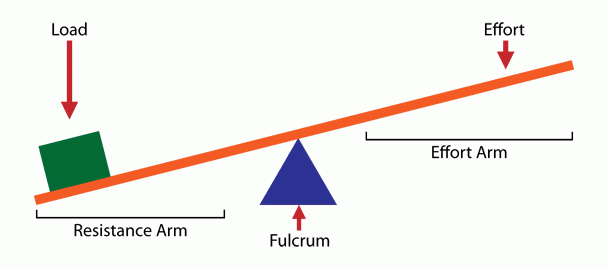Types of Lever - Examples, Mechanism, Application, Definition, FAQs
Lever meaning in physics, is the machine that is used to increase force. We call them "simple machines" because they need only two parts- the handle and therefore the fulcrum. The handle or bar of the lever is named the "arm", it is the kind that you simply push or pull on. The "fulcrum" is that the point on which the lever turns or balances. . In this article, we will discuss, what is lever? definition of lever with its examples. What are functions of lever?principle and mechanism of lever.What are the different types of lever?What is fulcrum? or definition of fulcrum. What is class 1, class 2, and class3 type levers with its examples? What is meant by leverage? application of lever. So let’s see,
JEE Main/NEET 2027: Physics Important Formulas for Class 10
NEET 2025: Mock Test Series | Syllabus | High Scoring Topics | PYQs
JEE Main: Study Materials | High Scoring Topics | Preparation Guide
JEE Main: Syllabus | Sample Papers | Mock Tests | PYQs
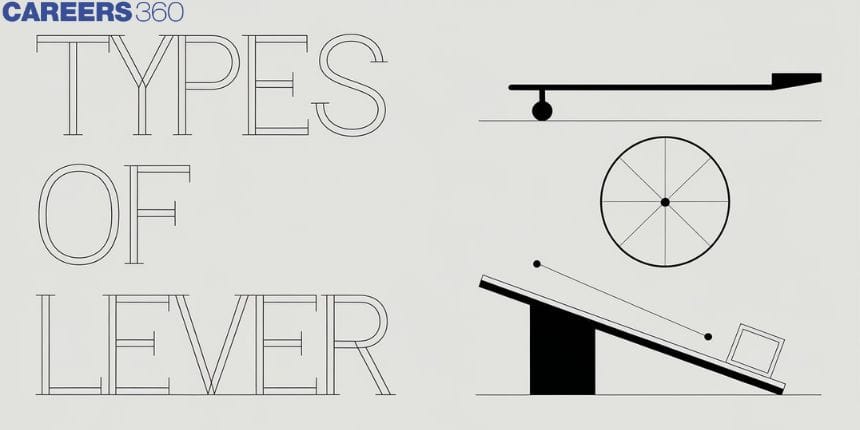
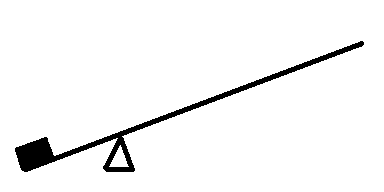
Also read -
- NCERT Solutions for Class 11 Physics
- NCERT Solutions for Class 12 Physics
- NCERT Solutions for All Subjects
What is a lever?
The word "lever" came from English about 1300 from Old French, during which the word was levier. The word ‘lever’ in terms of the verb means "to raise".
Definition: A lever is simple machine which involving of a beam or rigid rod pivoted (fulcrum) at a hard and fast hinge, or fulcrum. A lever may be a rigid body capable of rotating on some extent on itself. A lever amplifies an input force to supply a greater output force, which is claimed to supply leverage. The meaning of leverage in Bengali is “লিভারেজ (Libhārēja)”
The ratio of the output force to the input force is mechanical advantage of that the lever. And it is main function of lever. As such, the lever may be mechanical advantage device, trading off force against movement.

The formula of mechanical advantage of lever is
= Load (otput force)/Effort (Input force) = distance from load to fucrum/distance from Effort to fulcrum
Examples: teeter-totters, wheelbarrows, scissors, pliers, bottle openers, floor brush, brooms, shovels, nutcrackers and sports tools like baseball bats, golf clubs and hockey sticks. Even though your arm functioned as a lever.
Also read :
- NCERT notes Class 11 Physics Chapter 7 System of Particles and Rotational motion
- NCERT Solutions for Class 11 Physics Chapter 7 System of Particles and Rotational motion
- NCERT Exemplar Class 11 Physics Solutions Chapter 7 System of Particles and Rotational motion
There are four parts/kinds to a lever – lever arm, pivot (fulcrum), effort and cargo (load). In our human bodies:
- bones act as lever arms
- joints act as pivots
- muscles provide the trouble forces to maneuver loads
- Load forces are frequently the weights of the body parts that are proceed or forces needed to lift, push or pull things outside our bodies.
Levers also can be used to magnify motion/movement, for case in point, when kicking a ball; small contractions of leg muscles produce a way larger movement at the top of the leg.
Levers are liable to give us a strength advantage or a movement advantage but not both together.
Or
There are three parts/kinds to all levers:
- Fulcrum = the point at which the lever revolve.
- Input force (also called the effort) = the force put into the lever.
- Output force (also called the load) = the force put in by the lever to move the load.
Principle of Liver:
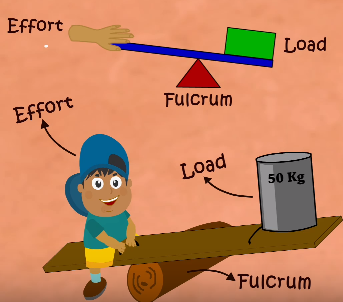
A lever works on the principle of moments (short time). For an ideal lever, it is imagined that the lever is light weight (weightless) and frictionless. It has been practically based that when two same forces proceeding in different (opposite) directions, i.e., clockwise and counterclockwise, are applied to a uniform lever at same distances from the fulcrum, they oppose each other and found a state of equilibrium in the lever.
In the stability position of the lever, by the principle of moments (short time),
Moment of load to the fulcrum = Moment of the effort to the fulcrum.
Related Topics Link, |
Types of lever:
The ability of the body to both apply and withstand forces is understood as strength. One component of strength is that the ability applies enough force to maneuver, lift or hold an object with weight, also referred to as a load. A lever may be a rigid object wont to make it easier to maneuver an outsized load a brief distance or a little load an outsized distance. There are three classes/types of levers, and every one three classes are present within the body. For instance, the forearm may be a 3rd class lever because the biceps pulls on the forearm between the joint (fulcrum) and therefore the ball (load).

- First Class lever
- Second Class lever
- Third Class lever
First Class lever:

In a class 1 lever, the fulcrum is positioned between the load and the effort.
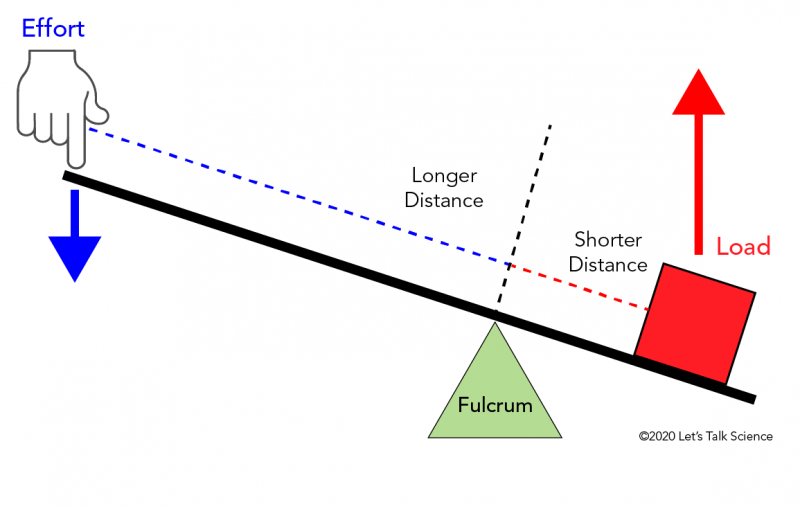
If the fulcrum which is adjacent to the load, then less effort is required to push the load a less distance. If the fulcrum is adjacent to the effort, then more effort is required to push the load a greater distance. A teeter-totter, an shanghai, and a chisel are all first class lever examples. First class levers are useful for lifting large loads with little effort.
Second class lever:
In a class 2 lever, the load is positioned in betwixt the effort and the fulcrum.
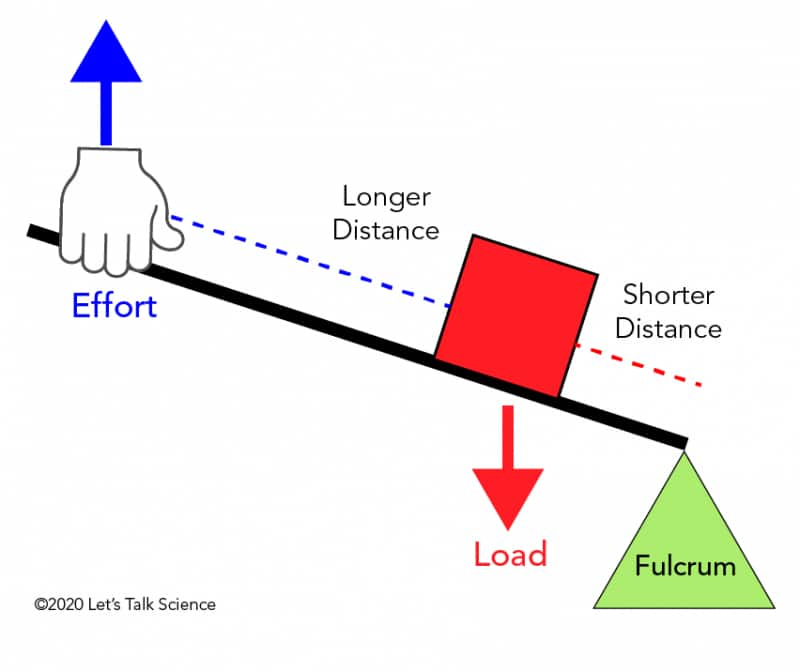
If the load is adjacent to the fulcrum than the effort, then less strive will be needed to move the load. If the load is adjacent to the effort than the fulcrum, then more strive will be needed to push the load. A trolley, a bottle opener, and a blade are class 2 lever examples.
Applications: In the human body, a second class lever is used when a person stands on sneaking (tip-toe).
Third Class lever:
In a class 3 lever, the effort is positioned in between the load and the fulcrum.
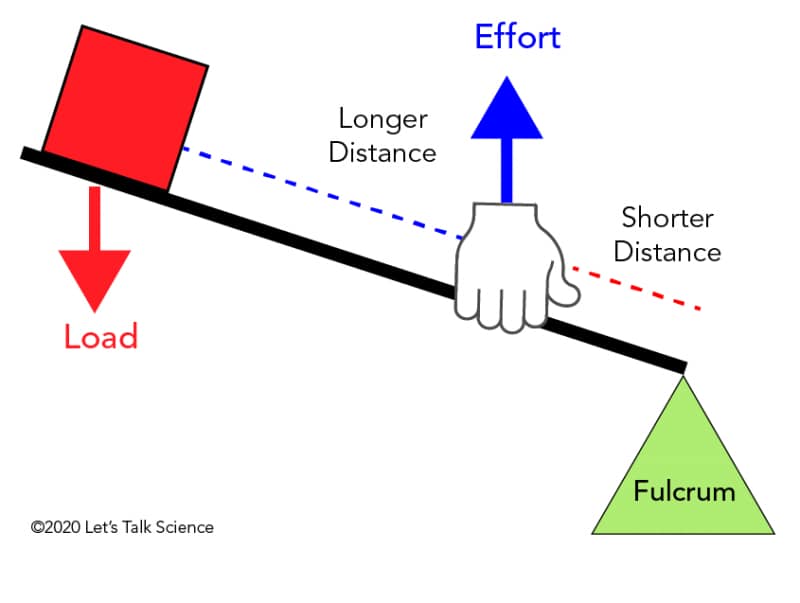
If the fulcrum is adjacent to the load, then less effort is required to push the load. If the fulcrum is adjacent to the effort, then the load will push a large distance. A pair of pincers, Lech a baseball bat or using your arm to lift are class 3 lever examples.
Also check-
- NCERT Exemplar Class 11th Physics Solutions
- NCERT Exemplar Class 12th Physics Solutions
- NCERT Exemplar Solutions for All Subjects
NCERT Physics Notes:
Frequently Asked Questions (FAQs)
Productivity (p) = 60%, Input (i) = 500 J
Output = p × i
= 60/100 × 500
Therefore, Output = 300 J
A pair of scissors wont to cut a bit of fabric has blades longer than the handles in order that the blades (cutlas) move longer on the material than the movement at the handles. Therefore, scissors used for gashing metals have short cutlases and long handles because it enables us to beat large resistive force by alittle effort.
Force Arm (Ea) = 2.5 cm
Length Arm = 20 cm
M.A. = Ea/ La
= 2.5/ 10
Therefore, M.A. = 0.25
A lever works on the principle of moments (short time). For an ideal lever, it is imagined that the lever is light weight (weightless) and frictionless. It has been practically based that when two same forces proceeding in different (opposite) directions, i.e., clockwise and counterclockwise, are applied to a uniform lever at same distances from the fulcrum, they oppose each other and found a state of equilibrium in the lever.
In the stability position of the lever, by the principle of moments (short time),
Moment of load to the fulcrum = Moment of the effort to the fulcrum.
Lever are classified into three categories:
First class, second class and third class lever.
Also Read
05 Feb'25 04:39 PM
25 Dec'24 10:26 AM
29 Nov'24 08:18 PM
29 Nov'24 11:02 AM
13 Nov'24 09:48 AM
12 Nov'24 11:22 PM
11 Nov'24 05:38 PM
11 Nov'24 11:37 AM
26 Sep'24 11:20 AM
26 Sep'24 11:12 AM

